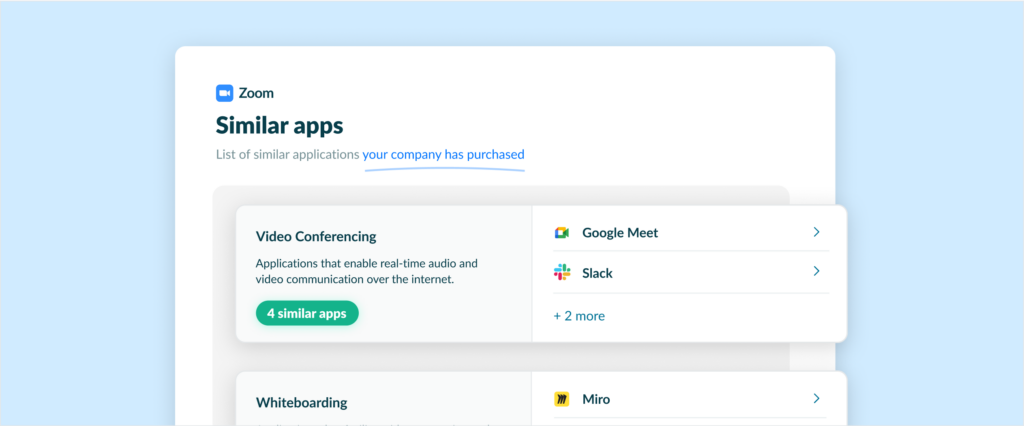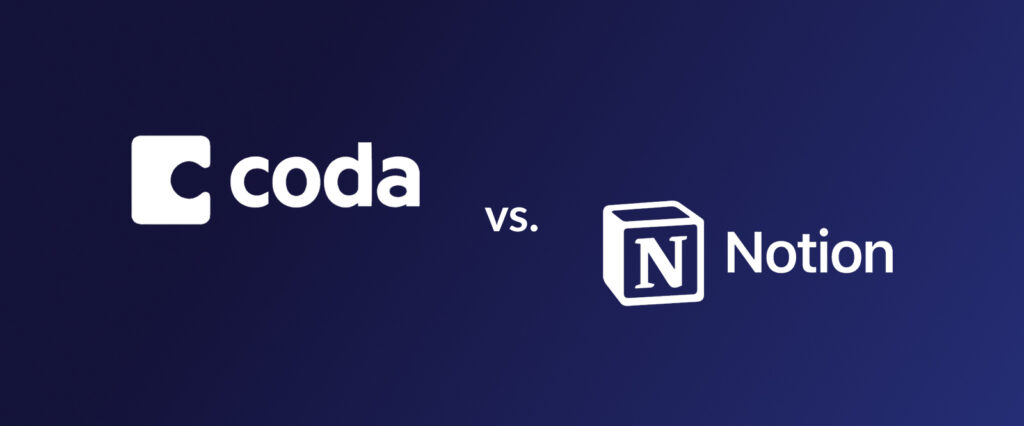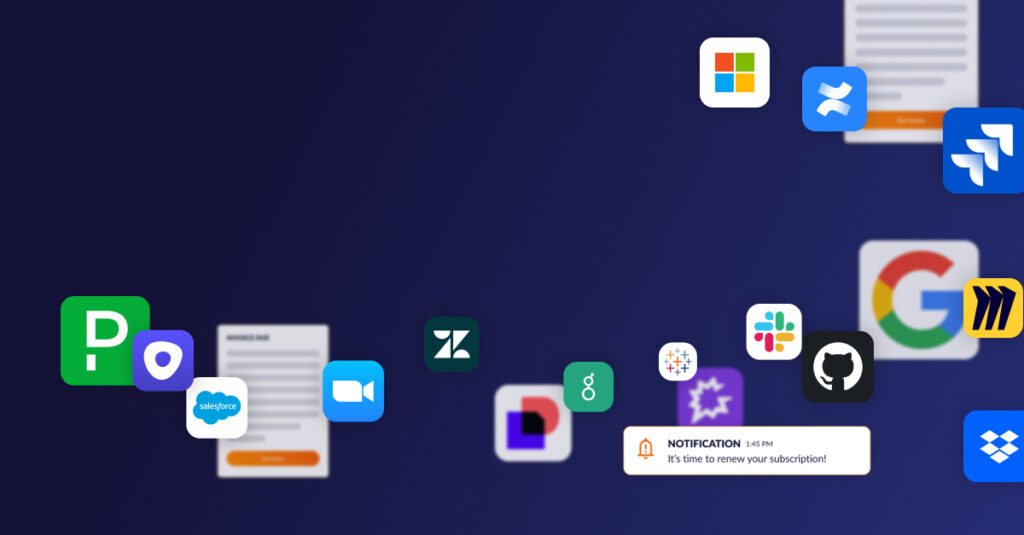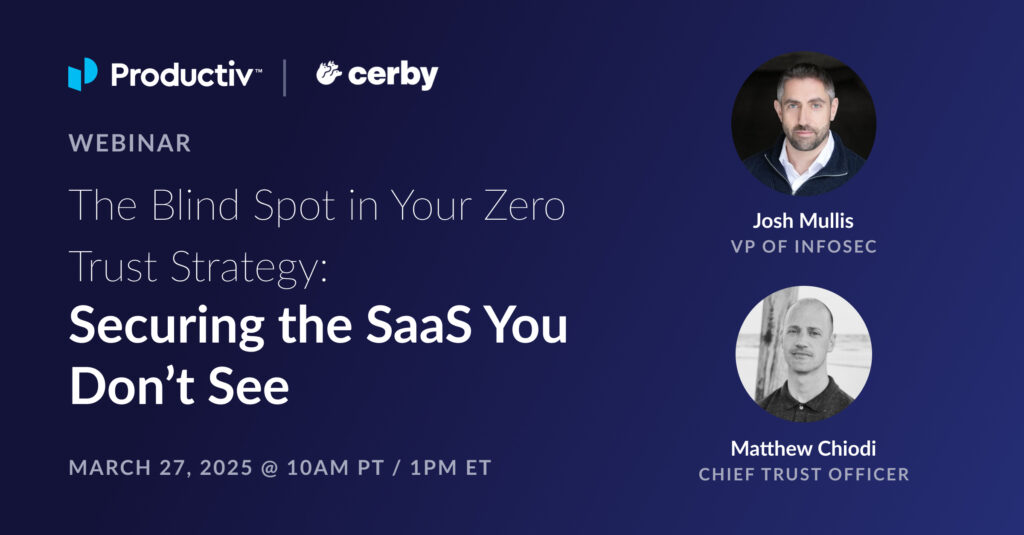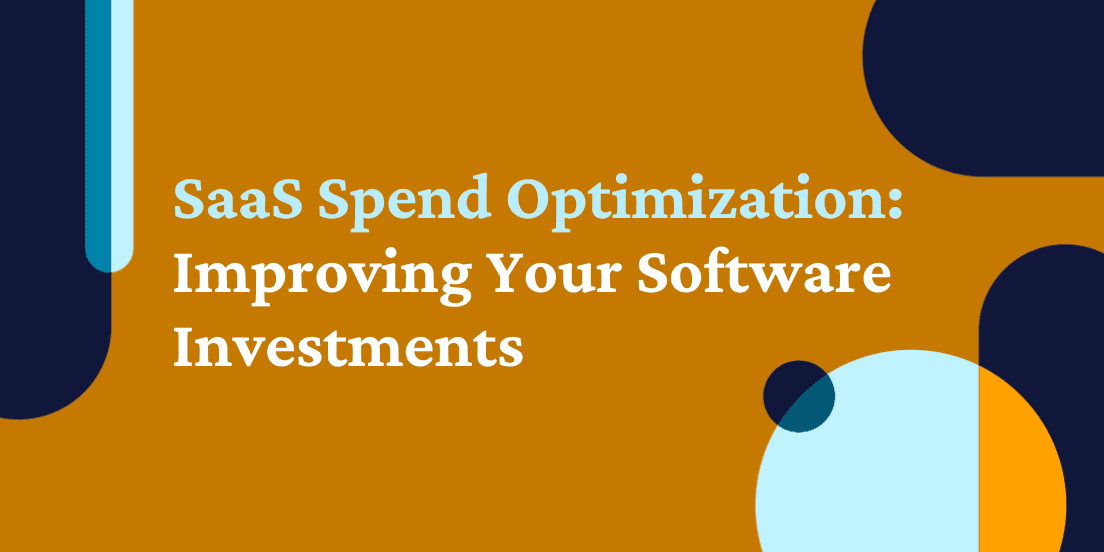
SaaS spend optimization: Improving your software investments
Smart businesses make the most of every dollar spent—especially in this economy. But as business leaders feel the pressure to reduce spend, SaaS portfolios continue to grow. Teams rely on SaaS applications for a variety of critical tasks and SaaS spend optimization isn’t a result of hacking away at your software.
Part of the conundrum of SaaS sprawl is that, as your SaaS environment grows, it becomes more difficult to see, measure, and manage SaaS apps. Hasty cost cutting can end up doing more bad than good.
Thankfully, the right tools can help organizations discover opportunities where you can save big without sacrificing productivity. Let’s explore some of the basics of SaaS spend optimization, followed by a new framework that’s going to change the way you think about SaaS Management.
What is SaaS spend?
SaaS spend refers to the total amount of money your organization spends on Software as a Service (SaaS). The cost of SaaS licenses are a big part of SaaS spend, but they aren’t the whole story. You should also consider:
- Implementation costs: These are the costs associated with getting a SaaS application up and running. While some apps are ready to go with little to no implementation, others might require setup and configuration, data migration, customization, training, and ongoing support.
- Service fees: This includes fees from the vendor for hosting the software, providing support, and additional services. Depending on the Service Level Agreement (SLA), these fees might be included up to a certain point — with additional fees for excessive service requests.
- True-ups: If the usage outlined in a SaaS agreement with a vendor is exceeded for a period of time (e.g. provisioning 120 licenses to employees when their contract is only for 100), you may need to pay an additional fee to the vendor in the form of a true-up.
- Breaches: Data breaches are extremely costly, $4.35 million on average, but can be largely avoided with the right security protocols in place.
- Overage fees: These are additional costs associated with exceeding the number of users, maxing out data storage, or using too much data.
- Migration fees: These are fees charged by the SaaS provider for moving your data and applications from one SaaS platform to another.
- Contract renewal fees: There may be additional costs for renewing your SaaS contracts. Review your contracts ahead of renewals to stymie any surprises and reveal opportunities for negotiations.
Be sure to take into account the big picture when measuring SaaS spend to better address SaaS cost optimization.
What is SaaS spend optimization?
SaaS spend optimization is the process of rightsizing the costs associated with using SaaS applications. Maximizing your investments in SaaS applications is twofold. First, it’s about reducing costs. Second, it’s about improving SaaS app usage within your organization. Both are necessary to maximize your investments and drive efficiency within your business.
SaaS spend optimization starts with an audit of your SaaS subscriptions. A thorough audit can shed light on the number of licenses or users, usage patterns, and costs associated with each application.
The next step is to prioritize which SaaS solutions are most critical to the organization’s success. You might also find redundant applications which can be cut or consolidated for better savings. Organizations often discover new applications that either do what their current apps do better or do them cheaper. Both of these can be routes to optimization through improved efficiency or reduced spending.
Consider negotiating with your SaaS providers for more advantageous pricing and contract terms. Explore features and add-ons, whether vendors offer discounts for additional seats, changes to service licensing agreements, and more.
Continuous monitoring is essential to SaaS spend optimization. What works in the here and now might change as the business hires more employees, changes its organizational structure, or discovers new SaaS applications.
How do you gain visibility into SaaS spending?
Making informed decisions about your SaaS spend requires visibility into your SaaS environment. Recognizing that organizations can have sprawling SaaS environments with hundreds of applications, it’s easy to miss things. Today, it’s not only IT and procurement who add apps to the organization’s tech stack — individual employees often purchase apps as well.
Organizations can improve this visibility into SaaS spending by implementing a SaaS Management Platform. These tools help track and monitor SaaS applications by centralizing data and control over the SaaS environment.
IT teams, CIOs, Finance teams, and Procurement teams love spend management tools because they help them conduct audits, manage budgets, and monitor usage in one easy place. More information means more informed decision-making. This benefits the organization as a whole as the company explores opportunities to cut costs and drive efficiencies.
Questions to ask when analyzing SaaS spend
Organizations need to ask themselves some important questions when analyzing their SaaS spending:
- Are you getting good ROI on your apps?
- Are they being used?
- Do you have categories with lots of redundant apps?
- Are your licensing allocated appropriately across licensing tiers?
- Do you have too many licenses in higher-cost licensing tiers?
- Do the contract terms match your needs?
- Are you getting the kind of service you need to succeed with the apps?
- Are you paying a fair price for the SaaS applications you’re using?
While tackling these questions is important for assessing the value of each application, it’s also wise to do this for your whole SaaS ecosystem. This will help you determine which apps you should renew, renegotiate, or reject.
Optimizing SaaS costs
SaaS cost optimization means spending the right dollars on the right technologies for your organization. In some cases, this might mean eliminating unnecessary or redundant SaaS applications discovered during an audit. In other cases, it might mean training employees to more efficiently use the software you’ve already purchased.
Negotiating the terms and conditions of your SaaS agreements is also a smart strategy. Rather than accepting the terms and conditions as is, organizations can better tailor their SaaS licenses by identifying their unique needs and communicating those to the vendor.
This might include the cost or length of the subscription, the number of seats, features or add-ons, and Service Level Agreements (SLAs). SaaS providers appreciate this level of attention because it also informs them about your business needs. This is a win-win situation for buyers who get what they need and vendors who can offer better customer experiences.
Consolidating SaaS services
SaaS applications have all kinds of features and add-ons. Vendors see this as a way to add value to their offerings. Unfortunately, buyers are sometimes unaware of how certain technologies might overlap.
For example, an instant messaging program might include a video-conferencing component. If an organization doesn’t realize this, it might purchase an unnecessary video-conferencing application alongside its instant messaging software. When you scale this oversight across hundreds of applications, you quickly realize how much money a business could be wasting on redundant technologies.
SaaS Management Platforms can help identify opportunities to consolidate SaaS services. This can result in big savings for organizations.

What does a SaaS Management Platform look like?
What are the implications of not optimizing SaaS spend?
Failing to address your SaaS spend has some major risks. The first and foremost is continuing to overspend on SaaS software. But that’s not the only drawback. Not optimizing SaaS spend is often a symptom of poor visibility into a company’s SaaS environment.
This can result in uncertainty for teams and employees who sometimes purchase redundant applications in order to do their jobs. By not centralizing the tracking and management of SaaS spending, shadow IT creeps in. Beyond the unfortunate security risks, employees also suffer from a lack of training on how to best use these technologies.
In short, the implications of not optimizing SaaS spending include poor visibility, low efficiency, overspending, and even cybersecurity risks.
The challenges IT and procurement face when optimizing SaaS spend
One of the biggest challenges facing IT and procurement leaders is a lack of visibility into their SaaS environments. Unfortunately, many SaaS purchases occur in silos within line-of-business (LOB) teams or by individuals and on an as-needed basis.
This lack of centralization can create gaps in visibility and disconnects in ownership. Research shows that more than half (56%) of apps are owned outside of a company’s IT department.
Frequently, teams within your organization purchase additional apps that solve the same needs as SaaS solutions you already own. IT and Procurement teams and LOB leaders need to consolidate apps to prevent these costly overinvestments.
Another challenge is the constant SaaS renewals. It’s not uncommon for organizations to have multiple SaaS contracts coming up for renewal every week. Compound this with the high number of intake requests and it’s easy to understand why IT and Procurement teams are swamped.
Additionally, many organizations lack a basic system of record for SaaS. This opens up the business to risks associated with unmanaged apps including security breaches, data leaks, and overspending on SaaS.
Creating a continuous process of SaaS spend optimization
Organizations will continue to buy SaaS applications as new challenges and opportunities arise, and how your employees use current applications will shift with time. Creating a continuous process for SaaS spend optimization can help you keep your technology investments cost-effective and efficient.
By using the Cost Optimization Framework Guide, organizations can equip themselves with a comprehensive, repeatable, and scalable approach to optimizing SaaS spend. This includes shining a light on shadow IT, cutting redundant apps, analyzing usage, and proactively addressing renewals.
6 steps for continuous SaaS spend optimization
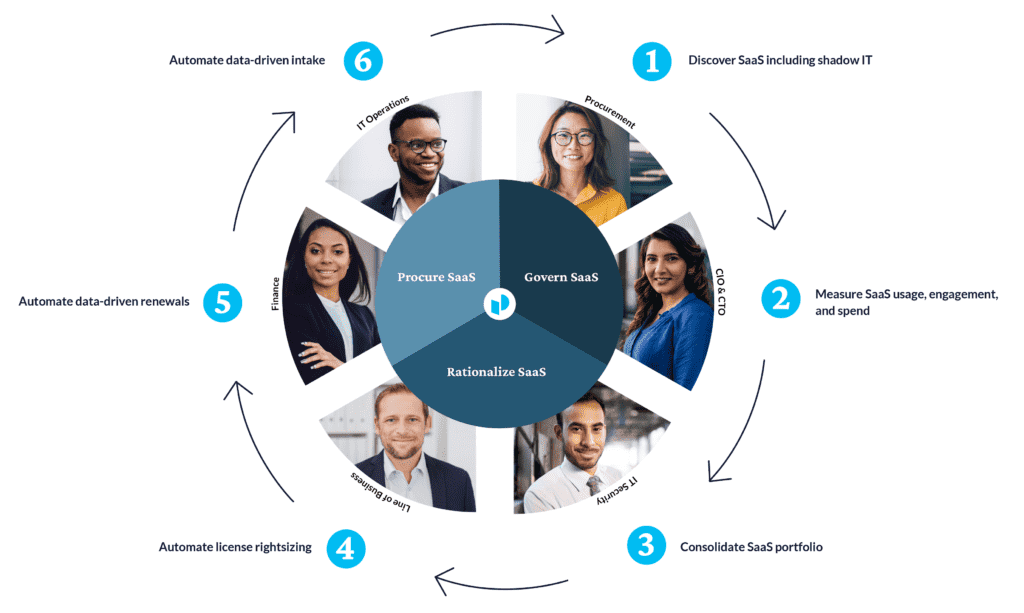
Here are six steps you can follow to continuously optimize SaaS spend across your portfolio. By pairing this framework with the insights and automation of Productiv, your organization will be able to unlock the most value from your SaaS portfolio at scale.
1. Discover SaaS including shadow IT
Identify existing apps, new apps, and spend not currently tracked by using hundreds of out-of-the-box connectors for expenses, payments, network, SSO, and more.
2. Measure SaaS usage, engagement, and spend
Explore spend and usage analytics by segmentation (employee, team, department, location, remote workers, and more) to get the full picture of where your budget is going.
3. Consolidate your SaaS portfolio
Analyze apps and usage by category with the help of engagement insights and usage benchmarks to determine which applications can be retired.
4. Automate license rightsizing
Use employee app engagement data to set up automated workflows that downgrade and re-harvest licenses that aren’t being utilized.
5. Automate data-driven renewals
Automate the renewal processes, orchestrate reviews and approvals, and use data and insights (including pricing benchmarks) for a stronger negotiating position.
6. Automate data-driven intake
Streamline intake requests, discover what peers are paying for similar technologies, and boost efficiency by managing and fulfilling requests for new software or services.
What organizations have achieved with this framework
Following the cost optimization framework listed above has resulted in big savings for many Productiv customers. Here are a few recent examples:
- Databricks optimized spend by as much as 35% on key business apps, such as Zoom and DocuSign
- Flexport saved over $1M by consolidating meeting applications
- Airtable saved over $700K by consolidating apps and rightsizing licenses for file management tools
- FloQast saved $220K by moving Sales off of an underutilized communications app
- Split saved 20% on overall SaaS spend by removing underutilized licenses
Real opportunities for savings already exist in your SaaS tech stack. All you need is the right tools to help you find those opportunities.
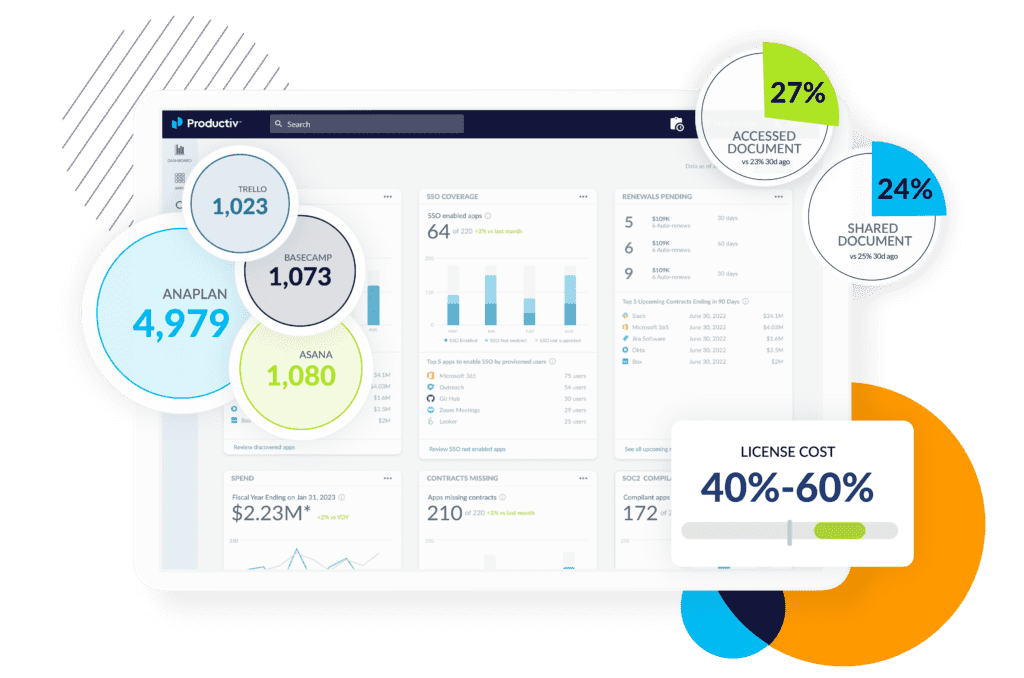
Meeting SaaS spend optimization head-on
When faced with mandates to reduce waste and better optimize SaaS spending, organizations need to lean on the right data to make the right decisions. Discover how SaaS management is helping companies better optimize SaaS costs, improve efficiency and usage, and maximize app ROI.

What does a SaaS Management Platform look like?
About Productiv:
Productiv is the IT operating system to manage your entire SaaS ecosystem. It centralizes visibility into your tech stack, so CIOs and IT leaders can confidently set strategy, optimize renewals, and empower employees.
Learn more today